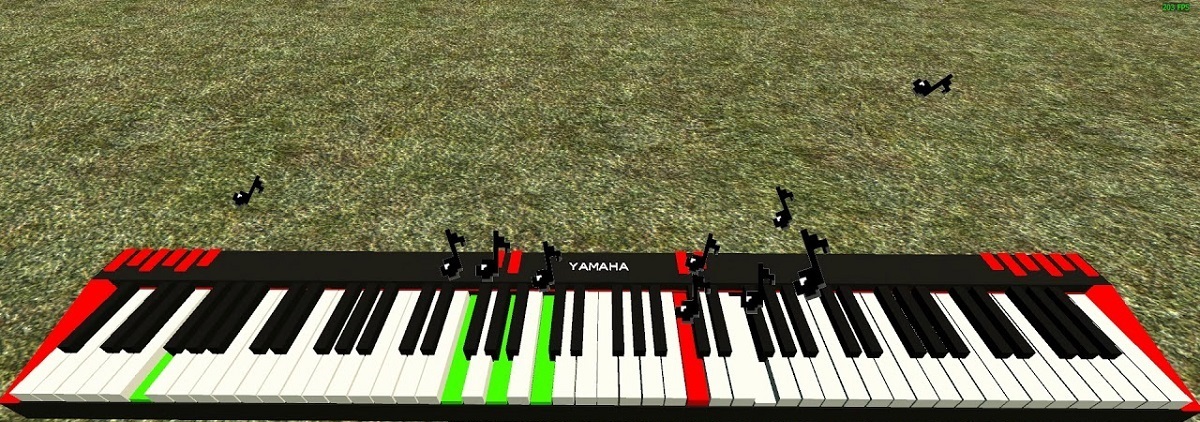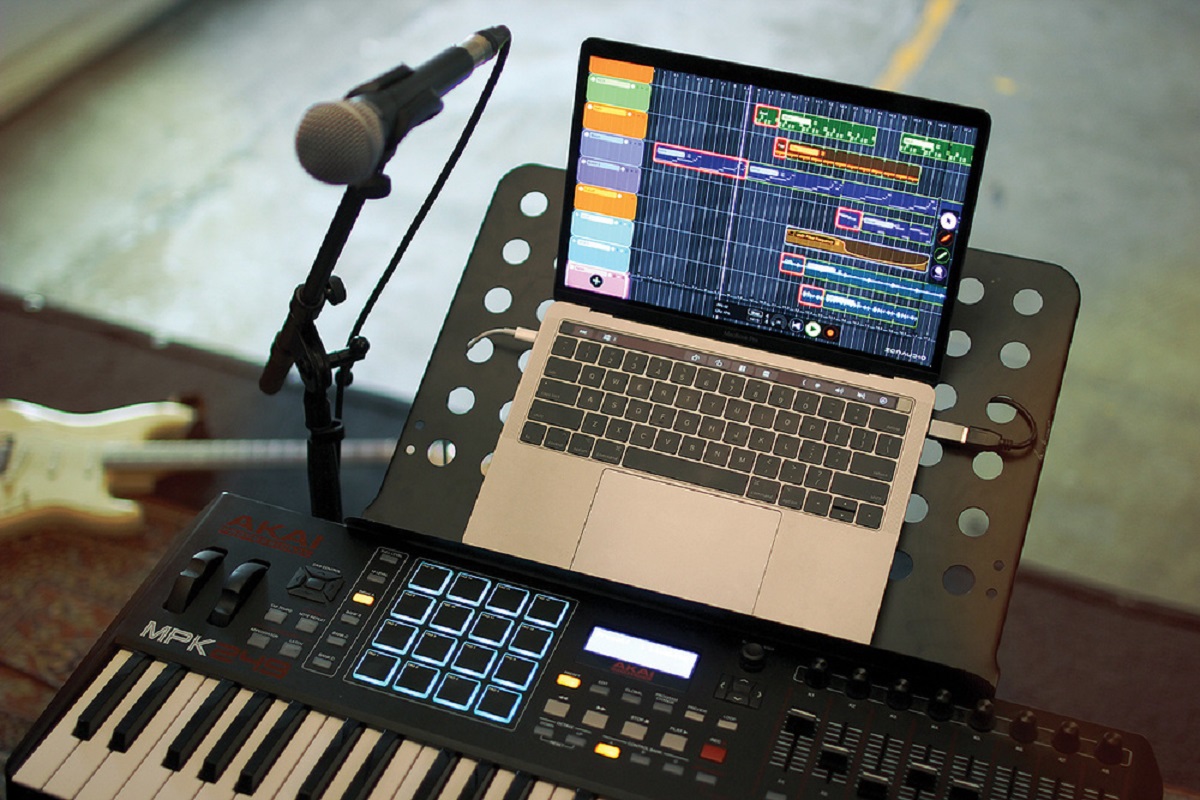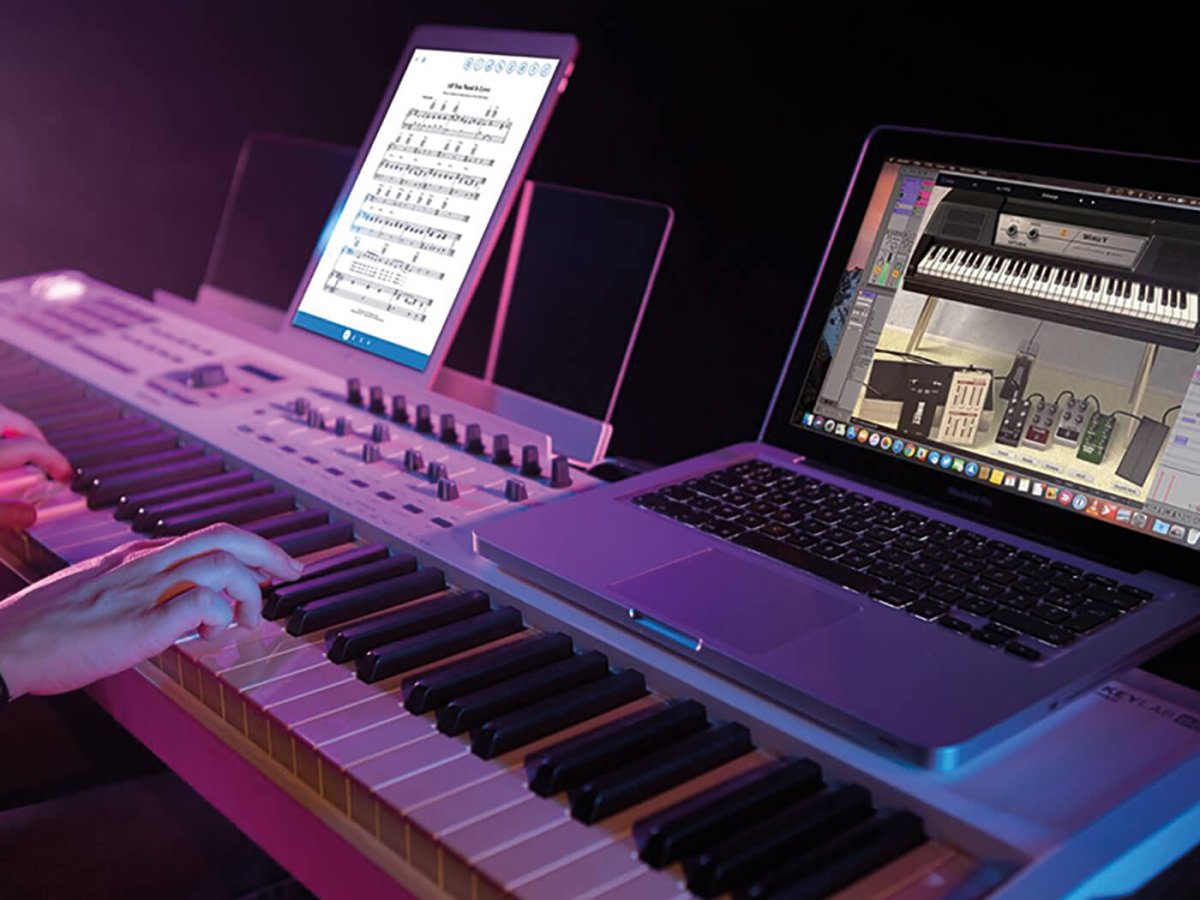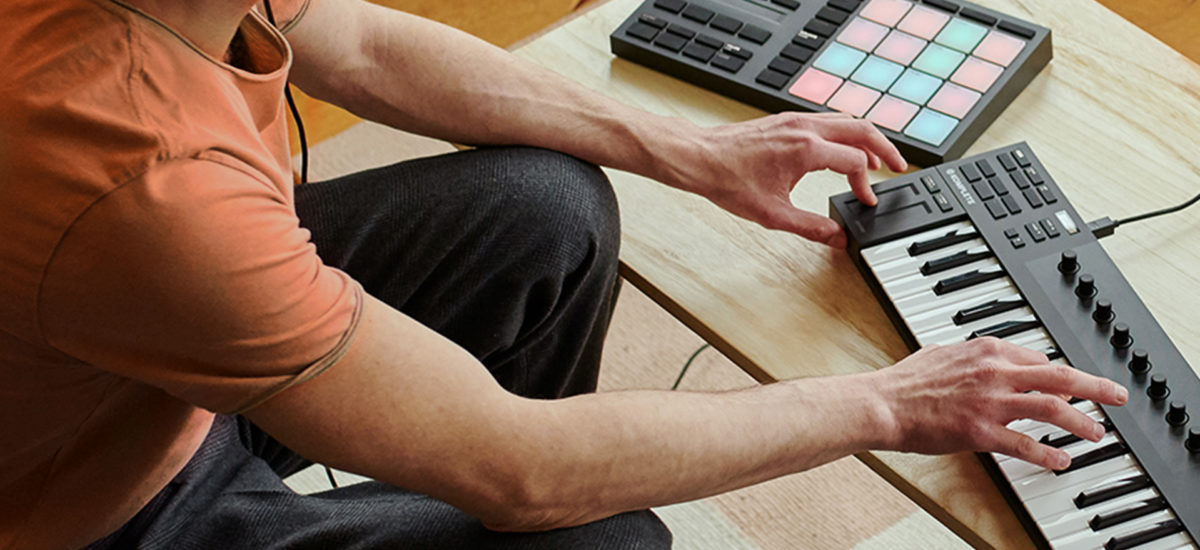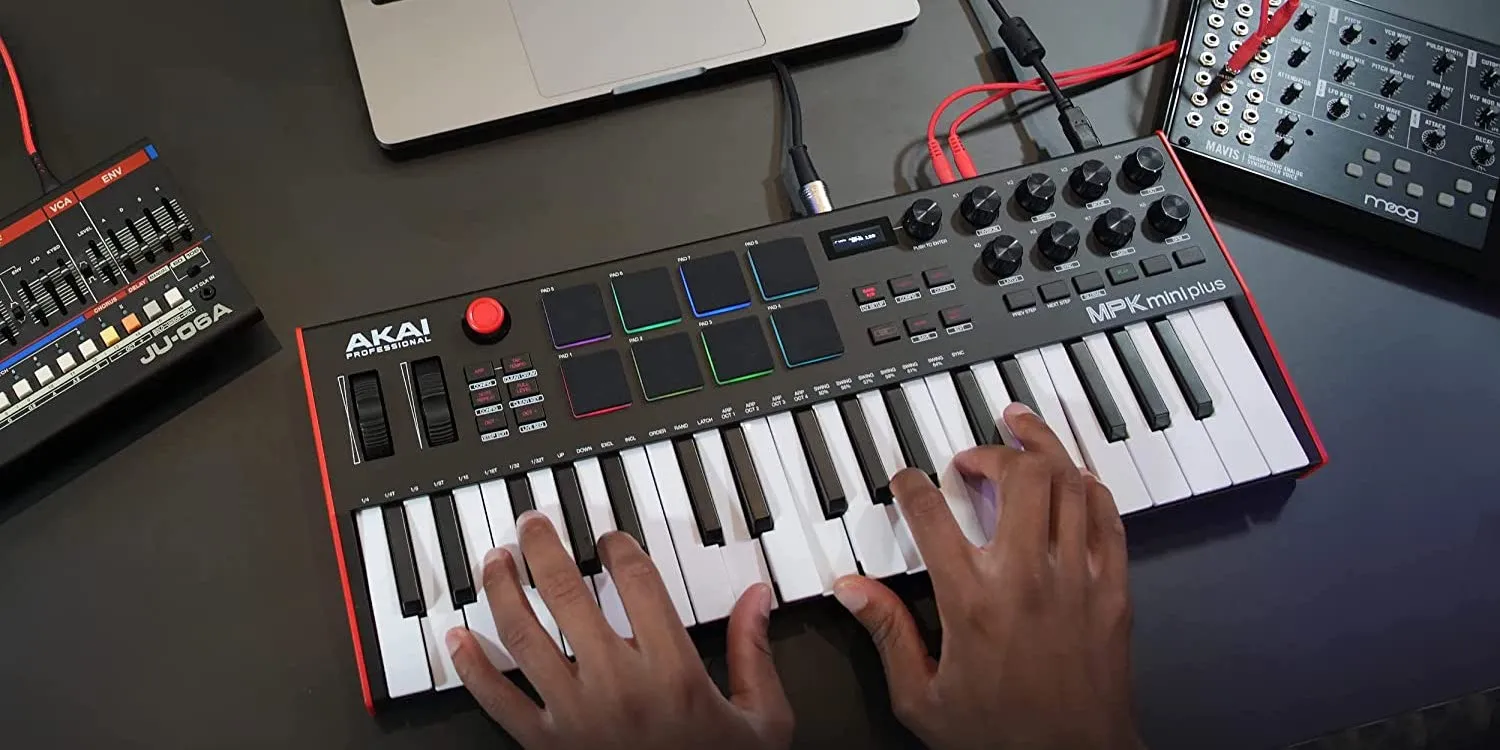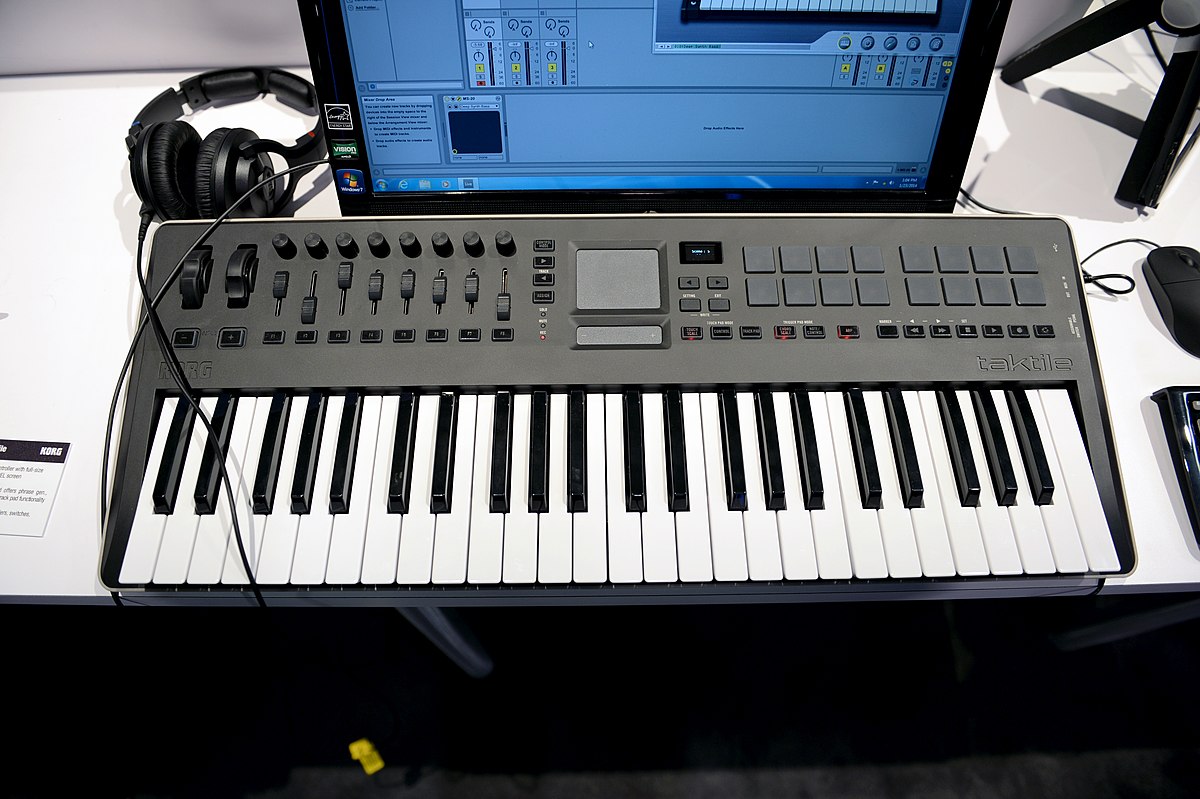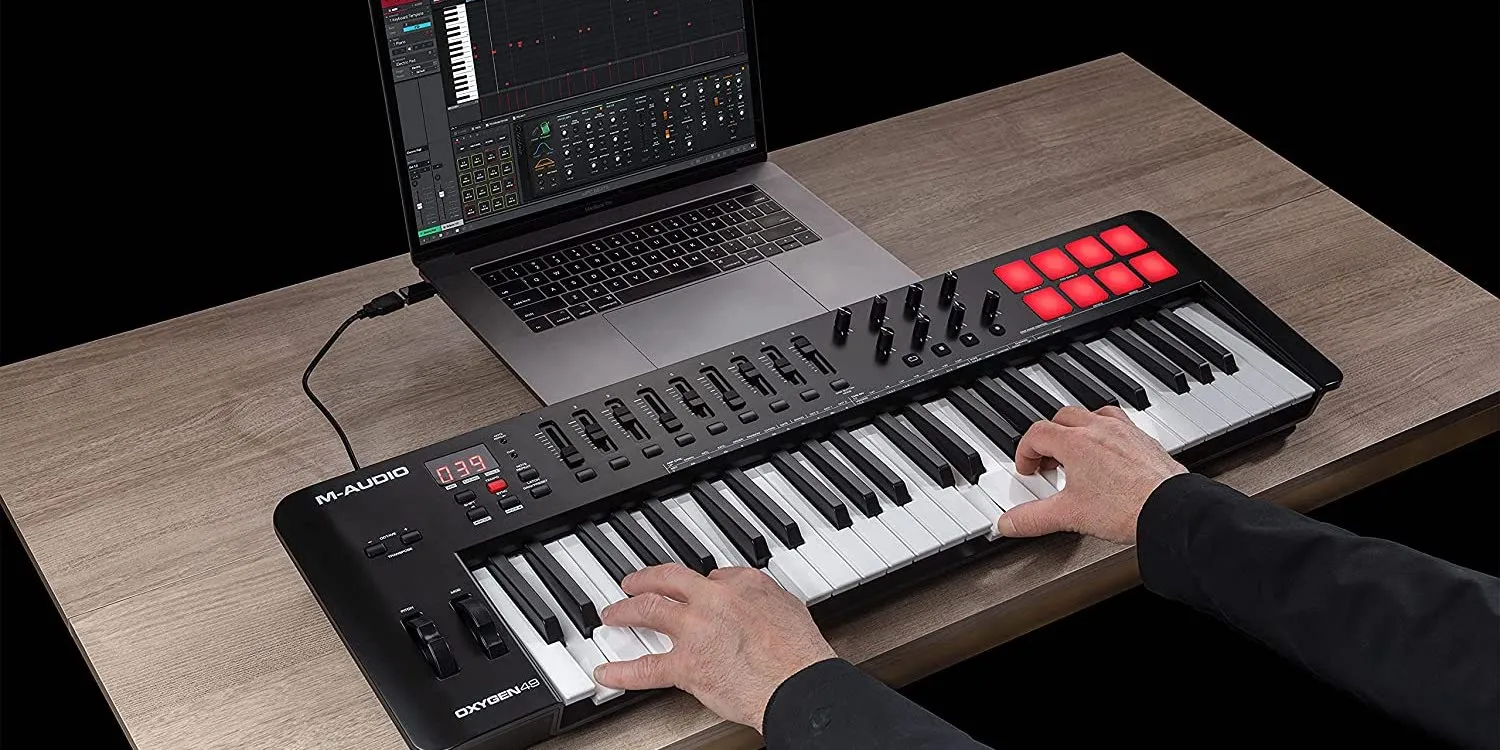Introduction
Are you a music enthusiast who also loves gaming? Or perhaps you're a gamer looking to add a new dimension to your gaming experience? If so, you might be intrigued by the idea of using a MIDI controller as a game controller. This innovative approach allows you to harness the power of a MIDI controller, typically used for music production, to control and enhance your gaming adventures.
In this guide, we'll explore the exciting crossover between music and gaming as we delve into the realm of MIDI controllers and their potential as game controllers. Whether you're a seasoned musician, a dedicated gamer, or simply someone with a passion for technology and creativity, this fusion of music and gaming is sure to pique your interest.
We'll begin by understanding the fundamental concept of MIDI controllers and their role in the music industry. Then, we'll embark on a journey to set up your MIDI controller as a game controller, exploring the necessary steps to seamlessly integrate these two worlds. Next, we'll delve into the intricacies of mapping MIDI controls to game functions, unlocking the potential for a personalized and immersive gaming experience. Following this, we'll guide you through the process of testing and adjusting your MIDI controller to ensure optimal functionality.
By the end of this guide, you'll be equipped with the knowledge and skills to transform your MIDI controller into a versatile game controller, opening up a realm of creative possibilities and enhancing your gaming escapades. So, let's embark on this unique exploration, where music meets gaming in an innovative and exhilarating fusion.
What is a MIDI Controller?
A MIDI (Musical Instrument Digital Interface) controller is a versatile device used primarily in music production and performance. It serves as a bridge between musicians and their digital audio workstations (DAWs), synthesizers, and other electronic music equipment. MIDI controllers come in various forms, including keyboards, pad controllers, and knob-based controllers, offering a wide range of functionalities to musicians and producers.
At its core, a MIDI controller communicates musical information, such as note data, velocity, and control signals, to connected devices using the MIDI protocol. This communication allows musicians to trigger sounds, manipulate parameters, and create expressive performances within their music software. The flexibility and programmability of MIDI controllers make them essential tools for shaping and sculpting musical compositions.
One of the key features of MIDI controllers is their ability to transmit and receive real-time control messages, enabling users to modulate sound parameters, adjust effects, and create dynamic performances. This real-time interaction with music software empowers musicians to infuse their music with nuances and intricacies, elevating the overall sonic experience.
With advancements in technology, MIDI controllers have evolved to offer extensive integration with software applications, allowing seamless control over virtual instruments, effects, and recording functions. Additionally, the versatility of MIDI controllers extends beyond music production, presenting innovative opportunities for cross-disciplinary applications.
As we venture into the realm of gaming, the adaptability and programmability of MIDI controllers become particularly intriguing. Leveraging the inherent capabilities of MIDI controllers, we can explore the potential of repurposing these devices to interface with gaming systems, offering a unique and customizable approach to gaming interactions.
Now that we’ve gained insight into the essence of MIDI controllers and their pivotal role in music creation and performance, we’re poised to embark on the journey of transforming these musical tools into game controllers, bridging the realms of music and gaming in a captivating fusion of creativity and technology.
Setting Up Your MIDI Controller as a Game Controller
Transitioning your MIDI controller into a game controller involves a series of steps that seamlessly integrate the device with your gaming setup. Before diving into the setup process, it’s essential to ensure compatibility between your MIDI controller and the gaming platform or software you intend to use. While the specifics of compatibility may vary based on the game and system, the following general guidelines can help you get started.
1. Identify Compatibility: Begin by researching the compatibility of your MIDI controller with the target gaming platform. Some games and software may have built-in support for MIDI controllers, while others may require additional software or configuration.
- Consult the game’s documentation or online forums to determine if the game natively supports MIDI controllers.
- For software-based games, explore third-party applications that facilitate MIDI controller integration with gaming environments.
2. Connect Your MIDI Controller: Once compatibility is confirmed, connect your MIDI controller to your gaming system using the appropriate interface. This may involve connecting via USB, MIDI cables, or other compatible connections, depending on the controller and gaming platform.
3. Install Necessary Drivers or Software: If your MIDI controller requires specific drivers or software to function with the gaming platform, ensure that you install and configure them according to the manufacturer’s instructions. This step is crucial for establishing seamless communication between the MIDI controller and the gaming software.
4. Configure Input Settings: Access the input settings within the game or gaming software to designate your MIDI controller as the input device for controlling game functions. Depending on the game’s interface, you may need to assign specific MIDI controls to corresponding game commands, such as character movement, actions, or camera control.
5. Calibration and Testing: After configuring the input settings, calibrate your MIDI controller to ensure accurate and responsive gameplay. Test the controller’s functionality within the game environment to verify that the assigned MIDI controls align with the intended game actions.
By following these steps, you can establish the foundation for using your MIDI controller as a game controller, merging the realms of music and gaming to unlock a new dimension of interactive and personalized gameplay experiences. The seamless integration of your MIDI controller into the gaming environment sets the stage for the next phase: mapping MIDI controls to game functions, a process that empowers you to tailor your gaming interactions to suit your preferences and style.
Mapping MIDI Controls to Game Functions
As you venture into the realm of using a MIDI controller as a game controller, the process of mapping MIDI controls to game functions emerges as a pivotal step in customizing your gaming experience. This stage empowers you to align specific MIDI inputs, such as keys, pads, knobs, or sliders, with corresponding game actions, offering a personalized and intuitive interface for controlling gameplay dynamics.
1. Identify Game Functions: Begin by understanding the game’s control requirements and identifying the functions you aim to map to your MIDI controller. This may include character movement, weapon selection, camera control, or any other in-game actions that can be enhanced through MIDI input.
2. MIDI Control Assignment: Access the game’s control settings or dedicated MIDI mapping interface to assign MIDI controls to specific game functions. Depending on the game’s customization options, you may be able to directly assign MIDI inputs to desired actions or parameters.
3. Consider Control Layout: Deliberate on the layout and organization of MIDI controls to optimize their correspondence with game functions. For instance, you can allocate drum pads for quick weapon selection, assign knobs for camera manipulation, or designate keys for character movement, aligning the controls with your gaming preferences and play style.
4. Fine-Tuning and Sensitivity: Refine the sensitivity and responsiveness of MIDI controls to ensure seamless integration with the game. This may involve adjusting velocity curves, control ranges, and response parameters to achieve an optimal mapping that aligns with your gaming nuances.
5. Test and Iterate: After mapping the MIDI controls, engage in extensive testing within the game environment to assess the effectiveness of the assigned mappings. Iterate on the mappings as needed, refining the configurations to achieve a cohesive and intuitive control scheme that enhances your gaming proficiency and enjoyment.
By meticulously mapping MIDI controls to game functions, you can craft a tailored gaming interface that reflects your creative input and preferences, elevating your gaming interactions to a personalized and immersive level. The fusion of music technology and gaming dynamics unfolds as you harness the expressive potential of MIDI controls to shape and influence your gaming escapades, blurring the boundaries between musical artistry and interactive gameplay.
Testing and Adjusting Your MIDI Controller
Once you’ve set up and mapped your MIDI controller to function as a game controller, the next crucial phase involves testing and fine-tuning the controller to ensure optimal performance and seamless integration with your gaming experience. This iterative process allows you to refine the responsiveness, sensitivity, and overall functionality of the MIDI controller, aligning it with your gaming preferences and play style.
1. Functional Testing: Initiate a comprehensive test of the MIDI controller within the gaming environment, evaluating its responsiveness to assigned game functions and actions. Verify that each MIDI input accurately translates into the intended in-game responses, such as character movements, interactions, or menu navigation.
2. Sensitivity Calibration: Assess the sensitivity and responsiveness of the MIDI controls, adjusting parameters such as velocity, pressure, and control ranges to achieve a nuanced and intuitive gaming interface. Fine-tune these settings to ensure that the MIDI controller accurately captures and translates your input dynamics into the game environment.
3. Ergonomic Considerations: Evaluate the ergonomic layout and usability of the MIDI controller in the context of gaming sessions. Consider factors such as hand positioning, reachability of controls, and overall comfort during extended gameplay, making adjustments to enhance the controller’s ergonomic suitability for gaming interactions.
4. Integration Feedback: Solicit feedback from fellow gamers or beta testers regarding the integration of the MIDI controller into the gaming environment. Gather insights on the user experience, control intuitiveness, and overall impact on gameplay dynamics, leveraging this feedback to iteratively refine the controller’s functionality.
5. Iterative Refinement: Engage in an iterative refinement process, revisiting the mapping and sensitivity settings based on the testing outcomes and user feedback. Continuously fine-tune the MIDI controller to align with evolving gameplay requirements and user preferences, striving for a harmonious fusion of musical expression and gaming immersion.
Through rigorous testing and iterative adjustments, you can elevate your MIDI controller’s role as a game controller, crafting a tailored and responsive interface that amplifies your gaming prowess and creativity. The collaborative synergy between music technology and gaming dynamics unfolds as you refine and adapt the MIDI controller to harmonize with your gaming adventures, blurring the boundaries between musical artistry and interactive gameplay.
Conclusion
As we conclude this exploration of using a MIDI controller as a game controller, we find ourselves at the intersection of music and gaming, where creativity and technology converge to redefine interactive experiences. The journey embarked upon in this guide has unveiled the transformative potential of MIDI controllers, traditionally synonymous with music production, as versatile tools for shaping gaming interactions.
By understanding the essence of MIDI controllers and their pivotal role in music creation and performance, we laid the groundwork for repurposing these devices to interface with gaming systems. The seamless integration of MIDI controllers as game controllers opens up a realm of creative possibilities, allowing gamers to harness the expressive capabilities of MIDI inputs to influence and shape their gaming escapades.
From the initial setup and compatibility checks to the intricate process of mapping MIDI controls to game functions, each step in this transformation journey reflects a harmonious fusion of technology, customization, and personalization. The iterative testing and adjustment phase further underscores the dedication to refining the MIDI controller’s functionality, ensuring that it aligns with the nuanced demands of gaming dynamics and user preferences.
As we reflect on this convergence of music and gaming, the broader implications of this fusion extend beyond individual experiences. It signifies the boundless potential for cross-disciplinary innovation, where the adaptability and programmability of technology transcend traditional boundaries, unlocking new avenues for creative expression and immersive interactions.
Ultimately, the fusion of MIDI controllers and gaming environments exemplifies the dynamic evolution of technology and its capacity to transcend predefined roles, offering users the freedom to reimagine and redefine their interactions with digital interfaces. This synergy represents a testament to the ever-expanding landscape of creative possibilities, where the boundaries between disciplines blur, giving rise to innovative and personalized experiences.
As you embark on your own journey of integrating MIDI controllers into gaming realms, may this guide serve as a beacon of inspiration and empowerment, igniting your creativity and curiosity to explore the uncharted territories where music and gaming converge. Embrace the fusion, embrace the possibilities, and let the harmonious synergy of MIDI controllers and gaming environments propel you into a realm of boundless creativity and immersive experiences.









